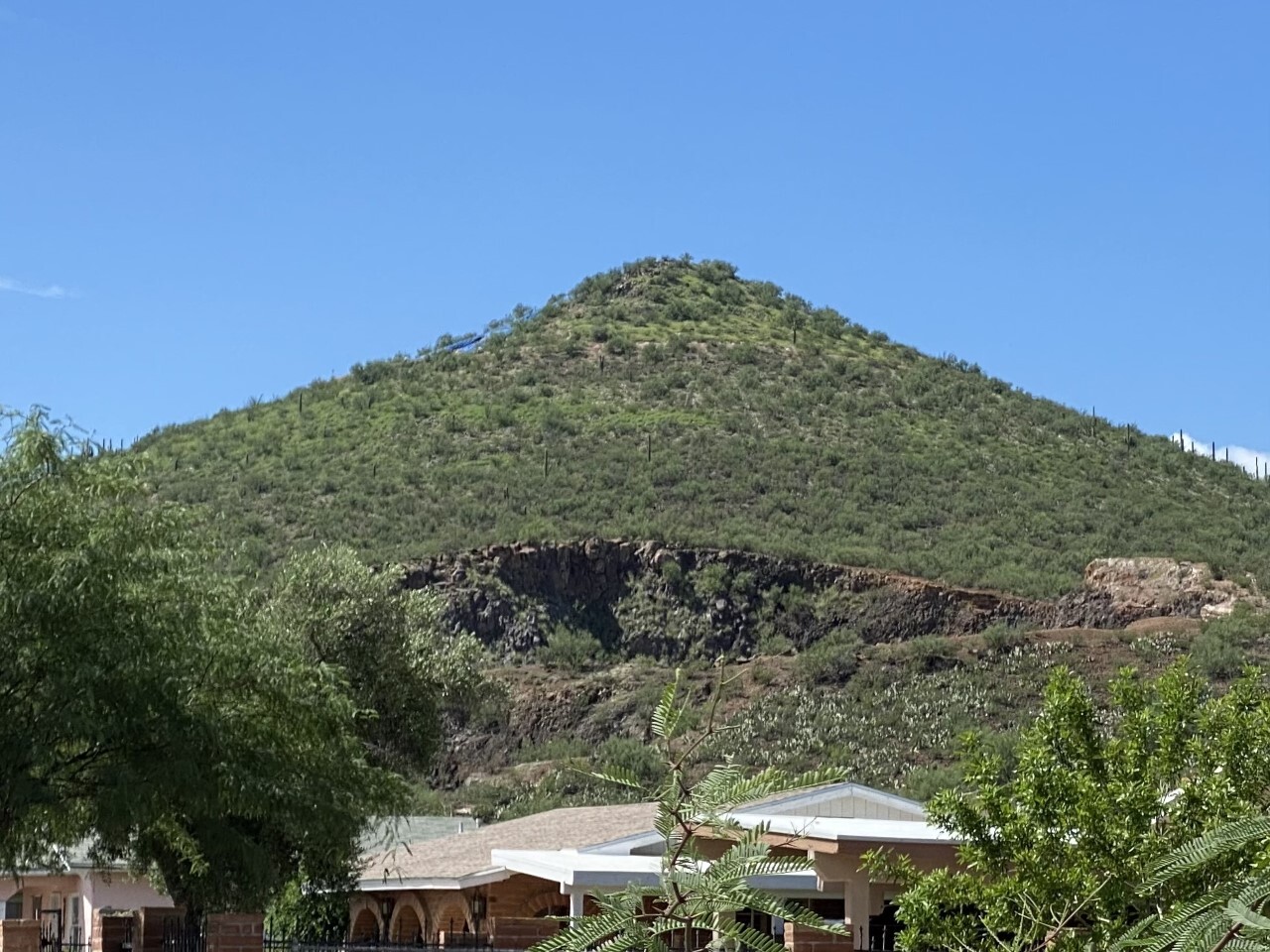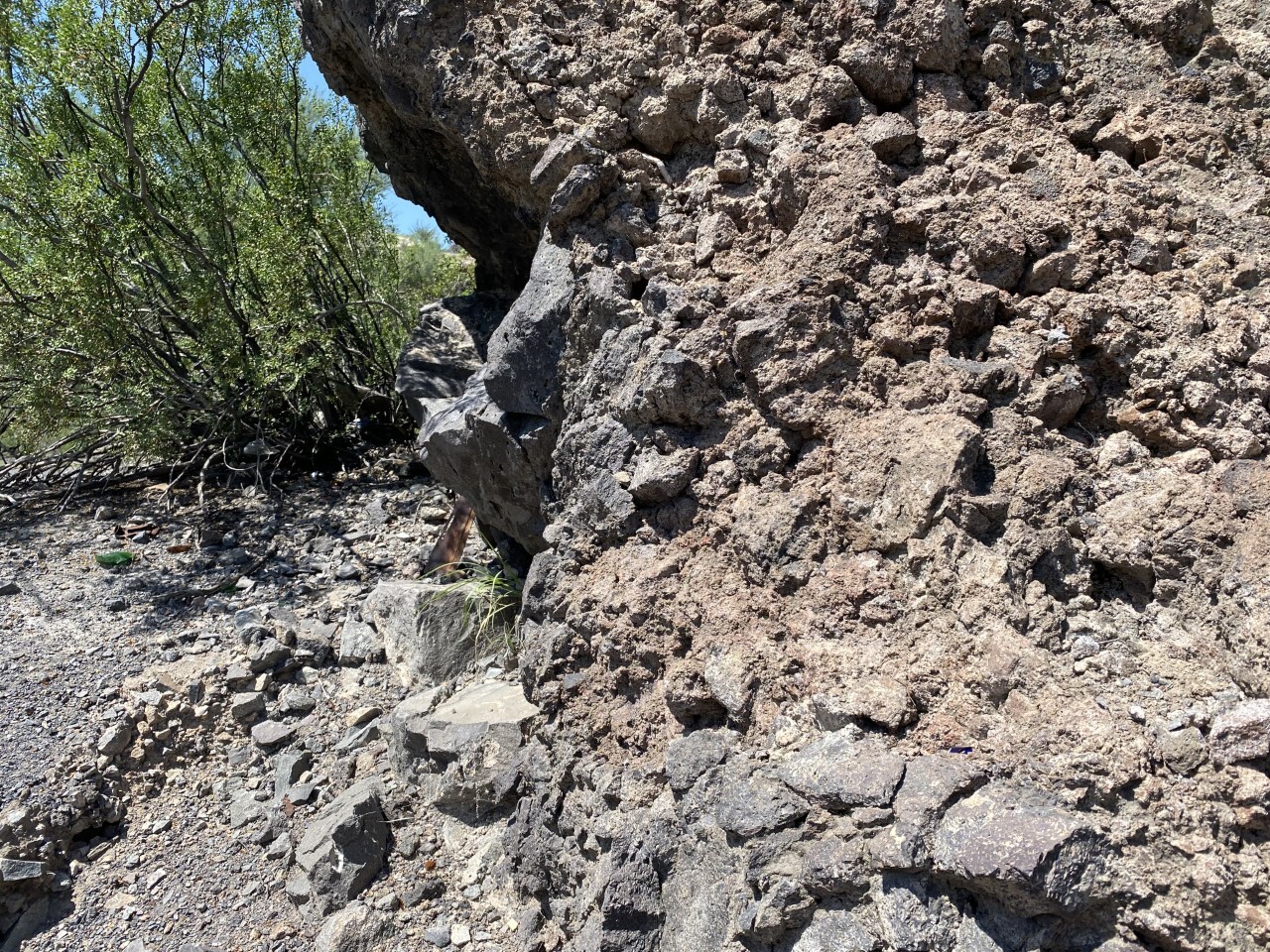TUCSON, Ariz. — A popular Tucson landmark is the source of a legend that's origins are said to go back millions of years.
"We live in an interesting place with thousands of years of history," said Homer Thiel.
Tucson Archaeologist Homer Thiel knows Southern Arizona's history very well. But does it include a meteor hitting the base of "A" Mountain and leaving a crater that still exists there to this day?
RELATED - Absolutely Arizona reveals "A" Mountain history
That's the legend, but before we explain what really happened to cause that crater on "A" mountain, we also have to address a separate legend about how the mountain was originally formed.

Thiel is a project manager with Desert Archaeology and says there was no volcanic explosion that created Sentinel Peak, what we call "A" Mountain, but he says the mountain was formed by volcanic activity between 10 and 20 million years ago.
"It just pushed up from below. Most of the Tucson Mountains are volcanic in origin, as are the mountains up in Flagstaff," Thiel said. "So, millions of years ago there were volcanoes that were erupting here in Tucson."
And the meteorite that supposedly created the crater... that's a lie too.
To understand what really happened, we need to go back thousands of years. The Tohono O'odham people founded a settlement at the base of "A" Mountain called Stjukson or black base. The black base comes from the volcanic rock. The name Stjukson eventually morphed into Tucson.
"In 1879, the Sisters of St. Joseph decided to build a hospital. That's the St. Mary's Hospital," Thiel explained. "They needed a source of rock for their foundations. So, they established this quarry up on the side of Sentinel Peak or "A" Mountain as it's called today. The basalt rocks are very heavy and very dense. They make great foundation stones."
Thiel says rocks taken from this quarry also built the foundations of many of the houses around UArizona as well as the rock wall surrounding parts of the University campus.

"Those were built in the 1910s. Around the same time that the university students put the big "A" up on the side of "A" Mountain," Thiel said.
The quarry almost led to the demise of "A" Mountain. In the mid-1920s, a couple attained the mineral rights to 200 acres of the mountain.
"They planned on basically taking the top of "A" Mountain off," recalled Thiel. "The city of Tucson decided that was not a good idea. So they asked the bureau of the interior to reverse that decision. That's how we got the park up there."
"A" Mountain was saved and the quarry closed. Over time a legend grew that a meteor created the crater on the side of "A" Mountain. A legend we now know is a lie.
——-
Pat Parris is an anchor and reporter for KGUN 9. He is a graduate of Sabino High School where he was the 1982 high school state track champion in the 800 meters. While in high school and college, he worked part-time in the KGUN 9 newsroom. Share your story ideas and important issues with Pat by emailing pat.parris@kgun9.com or by connecting on Facebook, Twitter, and Instagram.





